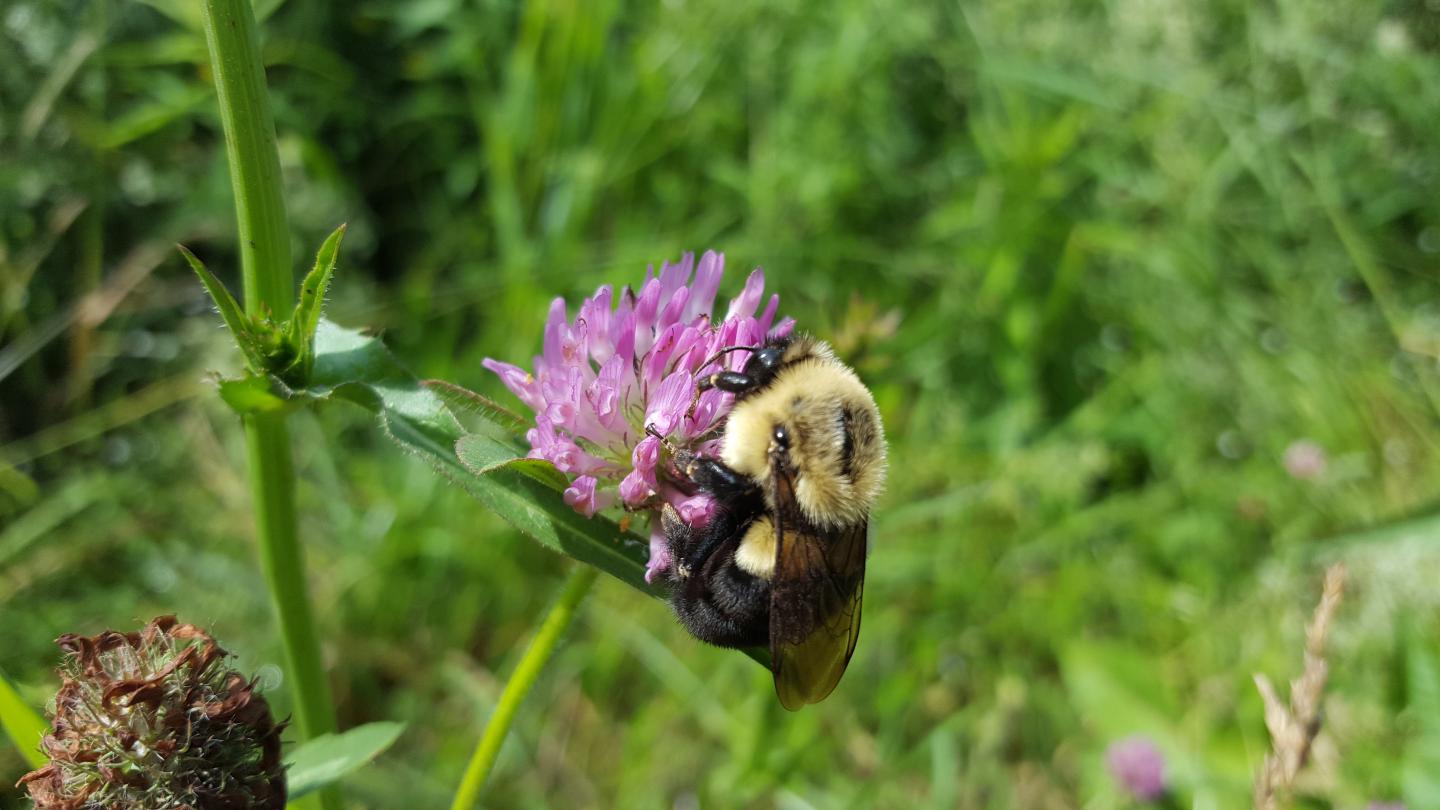While not in crisis, they rebounded fine after the latest periodic blip in numbers, it's good to think about how to prevent losses without incurring the cost of chemicals. One way, according to a new paper, is to prevent spread between species.
The common honeybee is the most well known pollinator, but it's one of over 20,000 species of bees. We can never have an accurate count of bees because we can never even get a count of bee species. Only a fraction even have hives.

Don't add more amateur beekeepers keeping hives, more diversity of bees make the difference. Image: Peter Graystock
That makes it challenging to control spread between them but the new paper using 5,000 flowers sought to learn how parasites are spread across diverse bee and flower communities, including solitary bee species. They found that when bee communities are at their most diverse, the proportion of infected bees were at their lowest, and when flowers were at their most abundant, fewer were likely to be acting as transmission hubs.
The team screened more than 5,000 wildflowers and bees across a 24-week growing season, capturing changes as different flowers bloomed and different species of bee dominated. Over 110 bee species and 89 flower species were screened, revealing 42 percent of bee species (12.2 percent individual bees) and 70 percent of flower species (8.7 percent individual flowers) had at least one parasite in or on them.
Bees had the highest prevalence of parasites late in the season, when social bees formed the majority of screened bees and overall bee diversity was lowest. This suggests keeping bee diversity high, with a variety of social and solitary species present, could help reduce the spread of parasites. Since social bees are likely to come from farmed colonies, the researchers also say their research points to the importance of keeping hives healthy, to avoid infecting wild bees.
The study is the first time researchers have screened wildflowers and bees for parasites over the season, and as well as the abundance of flowers affecting transmission, the team also found that the species of flowers played a role. For example, the species Lychnis flos-cuculi, commonly known as 'ragged robin', often had multiple parasite species on them, whereas Lythrum salicaria, or 'purple loosestrife' had few.
No one will argue with more flowers but it's the bee diversification that is most intriguing. In diverse bee communities, parasites are more likely to end up in a species they are not compatible with, meaning they can't replicate and spread further. By having more flowers, bees aren't all visiting and contaminating the same few flowers with high concentrations of parasites.





Comments